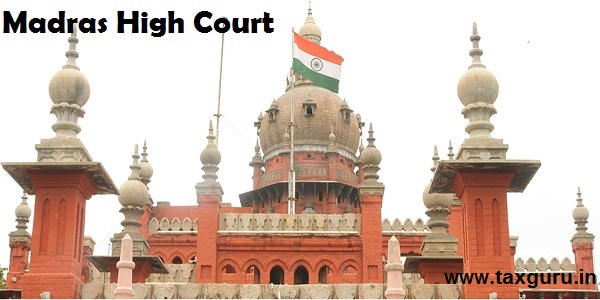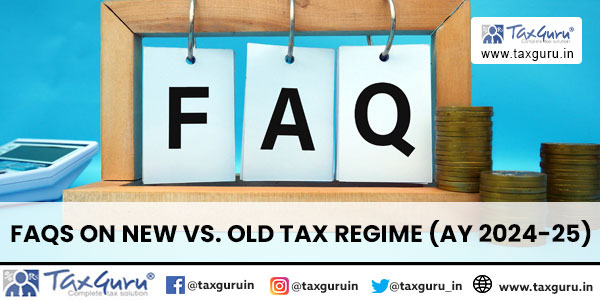Real Estate Sector before introduction of RERA, 2016 was one of the most unregulated sector in the country. We know that the Real Estate Sector is contributing around 6.5 to 7% of the GDP of India. In this unregulated sector , the consumers are the real victim and their hard earned money is duped by the “ Fly buy night “, promoters or real estate developers. Since there is no judicial remedy except Consumers Courts under the Consumer Protection Act, 1956. There existed an asymmetry of information between the promoters and buyers of real estate. Buyers lacked adequate information about the title to the land, the nature of development and the creditability of the developer , pricing of projects etc., the promoters earlier charged inappropriate rate for flats/shops on the basis of unregulated lodging on the flats. There was lack of standardisation and uniformity was key factors restraining better development of the real estate sector and due to this the confidence of innocent customers were on jeopardised. This practice is still going on due to collision of authorise and the developers.
INTRODUCTION;
RERA BILL,2013:- the Standing Committee on Urban Development (2012-2013) of the 15th Lok Sabha submitted its report on Real Estate ( Regulation and Development ) Bill, 2013. The committee emphasised for establishment of a regulator to control and development of Real Estate Sector in the country.
Inviting Suggestions by the Standing Committee- upon being introduced in theUpper House the RERA Bill has been transferred to Standing Committee and committee then asked for representations and suggestions on the draft bill. The committee held 17 sittings and after hearing grievances and suggestions of various players of the industry, the Standing Committee observed that in bringing about a balance between the need to protect consumers with the necessity of encouraging investment in the real estate.
The Committee observed and hear the grievances of the consumers , who were duped by the “ fly by night operators”, it was cognisant of the position that thee real estate sector was largely being developed through private promoters , all of whom could not be tarred with the same brush. The Committee further observed that there was a need to ensure that a renewed impetus is provided for the growth of the real estate sector to fulfill the government’s objective of ensuring housing for all, while at the same time protecting the interest of consumers.
RERA BILL, 2016- on the basis of report of selection Committee, the RERA Bill, 2016 was introduced and passed by the Parliament on 25th March, 2016. The RERA, 2016 came into force from 1st May, 2016 and initially with notification of 59 Sections out of total 92. Remaining sections were become effective from 1st May, 2017.
The RERA, 2016 sought to remedy the drawbacks of the existing regulatory framework in the country by establishing a real estate regulator to ensure that transactions between the promoters and the buyers and governments by the twin norms of efficiency and uniformity.
The RERA,2016 sought to bring amount accountability towards consumers and to significantly reduce frauds, delay and high construction costs.
The main objective of RERA, 2016 are as follows;
i) Symmetry of information between promoters and purchasers;
ii) Transparency of contractual conditions;
iii) Threshold standards of standardisation of accountability ;and
iv) A fast-track dispute resolution mechanism.
v) To establish the Real Estate regulatory Authority for regulation and promotion of the real estate sector; and
vi) To ensure sale of plot, apartment or building ,as the case may be, or sale of real estate project , in an efficient and transparent manner; and
vii) To protect the interest of consumers in the real estate sector; and
viii) To establish an adjudicating mechanism for speedy dispute redressal ; and also
ix) To establish the Appellate Tribunal to hear appeals from the decisions, directions or orders of –
a) The Real Estate Regulatory Authority; and
b) The Adjudicating Officer; and
For matter connected with or incidental thereto.
Please Note That: the RERA ,2016 is retroactive in character and provisions of RERA,2016 will not be applicable to those projects , which have been completed on the date of enactment , but applicable on projects ,which are going on or in respect of which Completion Certificate has not been received by the promoter developer.
FIRST TIME , in the real estate history a legislation has defined “ CARPET AREA”-
SECTION 2(k) of RERA, 2016 defines – “ Carpet Area”, means the net usable floor area of an apartment , excluding the area covered by external walls ,areas under services shafts, exclusive balcony or verandah area and exclusive open terrace area, but includes the area by the internal partition walls of the apartment.
Explanation- for the purpose of this clause, the expression “ exclusive balcony or verandah area” means the area of the balcony or verandah , as the case may be , which is appurtenant to the net usable floor area of an apartment , meant for the exclusive use of the allotted;
and “ Exclusive Terrace Area” means the area of open terrace which is appurtenant to the net usable floor area of a apartment , meant for exclusive use of the allotted.
IT MEANS THAT “ CARPET AREA”, IS THE NET USABLE FLOOR AREA OF THE APARTMENT.
EXCLUSIONS FROM CARPET AREA;
1. Area covered by external walls;
2. Areas covered under services shafts;
3. Exclusive balcony or verandah area ( i.e. area of the balcony or verandah ,which is appurtenant to the net usable floor area of an apartment, meant for he exclusive of the allotted);
4. Exclusive open terrace area (i.e. area of open terrace which is appurtenant to the net usable floor area of an apartment , meant for exclusive use of the allotted).
INCLUSION IN CARPET AREA- such area includes the area covered by the internal partition walls of the apartment.
DIFFERENCE BETWEEN “CARPET, BUILT-UP AND SUPER BUILT UP AREA
| Carpet Area | Built -Up-Area | Super-Built Up -Area |
| It simply means an area that can be that can be covered by carpet or say the inner distance between the walls. Common area such as lift, lobby etc. are not included in the Carpet Area. | It includes the carpet area plus the wall thickness along with other unusable areas of a building complex. | It is the total saleable area of a premise ,which includes the Carpet Area along with the terrace, balcony ,verandah, areas occupied by walls and area occupied for common uses like lifts ,stairs etc. |
| 1. Carpet Area= Net Usable Floor Area+ Internal walls
2. Built-up-Area= Carpet Area+ Area of Walls 3. Super Built up-Area= Built Up Area+ Common Areas. |
|
SECTION (n) “common areas” mean— (i) the entire land for the real estate project or where the project is developed in phases and registration under this Act is sought for a phase, the entire land for that phase; (ii) the stair cases, lifts, staircase and lift lobbies, fire escapes, and common entrances and exits of buildings; (iii) the common basements, terraces, parks, play areas, open parking areas and common storage spaces; (iv) the premises for the lodging of persons employed for the management of the property including accommodation for watch and ward staffs or for the lodging of community service personnel; (v) installations of central services such as electricity, gas, water and sanitation, air-conditioning and incinerating, system for water conservation and renewable energy; (vi) the water tanks, sumps, motors, fans, compressors, ducts and all apparatus connected with installations for common use; (vii) all community and commercial facilities as provided in the real estate project; (viii) all other portion of the project necessary or convenient for its maintenance, safety, etc., and in common use. |
Let’s consider an example: suppose in a society Mr. X has purchased a Flat having Super -Built Up Area of 1200 sq.ft( Carpet area 900 Sq.ft.) of Rs. 60.00 Lakhs. The developers are generally charged post prior t enactment of RERA, 2016 on 1200 sq.ft and the rate was Rs. 5,000/-sq.ft. Now post RERA ,2016 the rate will be Rs. 60.00 Lakhs/900 Sq.ft i.e. Rs. 6667/- sq.ft.
| Super Built up Area = Carpet Area + Area of walls + Common Area + Share Areas. |
******
DISCLAIMER: the article produced here is only for information and knowledge of readers. It is advisable to consult with professional for more understanding and clarification.




























In real life all builders sit and decide salable are or Super built-up area which is these days with a loading of 40 to 45 per cent of the Carpet area. This is hoodwinking or bypassing what is legal.
Another thing is MahaRera is open for even those flat buyers with whom builder has done injustice in his project that doesn’t come under MahaRera. This came about after Bombay High court order that MahaRera must entertain complaints even from flat buyers whose project doesn’t not come under MahaRera and therefore is not registered with it. This is a landmark judgement and already flat buyers from such unregistered projects have benefited getting justice from MahaRera. Now even Metal harrassment compensation can also be claimed under MahaRera. Your article misses these two important points in favour of flat buyers and against habitual law breaking builders
Sir, My builder in Mohali, Punjab, sold me the flat on the basis of per square feet of Super Area. He has provided me the break up of carpet area, built up area and super area, but is reluctant to provide me the calculation of the super area. Project comprising almost 7 acres has got been sanctioned from Rera of Punjab Govt in more than one phase. His reluctance created suspicion Evan about the quality of material being used by him. Kindly guide me for my future course of action.
Dear Sir
Hoe that you are doing well
Please note that : -The price of the flat is usually based on its saleable area. However, there are many ways to interpret and calculate the saleable area. The saleable area has a huge impact on the actual area one gets, and the total buying price. Not surprisingly, the maximum number of cases registered in the consumer courts, are against developers on the issue of cheating, regarding the size of the flat.
According to the provisions of the RERA Act, 2016 it is now the duty of the developer, to make buyers aware of the carpet area and quote prices based on this and not the super built-up area.
Meaning of Saleable area as per Telangana RERA Rules, 2017
“Saleable Area” includes Carpet Area plus veranda/balcony/terrace area which is exclusively meant for the Allottee plus the proportionate share of Common Areas and any other area as agreed between the Promoter and Allottee in the agreement of sale for which a proportionate cost has been collected from the Allottees.
IT IS DUTY OF DEVELOPER TO DISCLOSE CARPET AND SALEABLE AREAS and if it will not be complied with then you shall file a compliant in Consumer Forum for deficiency in service.
Regards
Pls advise the area to be taken into account for calculating Holding Tax in Odisha.
Dear Sir
Enclosed method of Calculation of Holding Tax in Orissa
(A) RESIDENTIAL
The Annual Value of a Holding for residential purpose is calculated as per following
procedures.
Step I
Plinth area of the holding in Sq. Meter x Rs 13.65 = say X
Step II
Deduct 15% of “X” towards repair & maintenance
Step III
Add 0.5% of the land cost where the holding is located (Land cost to be determined as per
G.A. Department Notification dated 01.05.1998)
Hence Annual Value Amount arrived through = (Step I + Step III – Step II)
Holding tax is levied per annum@ 17.5% of the Annual Value.
(B) COMMERCIAL HOLDING
The Annual Value of Holding of a Commercial unit is calculated by the following Procedure:
Step I
Add Civil Cost of the building + the cost of P.H & Electric fitting
Step II
Take 7.5% of the value arrived through step I
Step III
Add 0.5% of the land cost with Step II
Step IV
17.5% of the Cost arrived at Step III is the Holding Tax payable per annum
(C) RESIDENTIAL HOLDING USED ON RENT
Tax to be fixed on holdings given on Rent the following procedure is followed:
Step I
Monthly rent of the building x 12 = X
Step II
Deduct 15% of X towards maintenance cost
Step III
Add 0.5% of the Land Cost where the building is located
Step IV
Hence annual value of the building is (Step I + Step III – Step III) Holding Tax is levied @ 17.5% of the Annual Value arrived at Step IV.
Regards
I have some queries with regard to common area.
1. Is it arrive out for the whole project considering values of different components as described under the definition.
2. And than so calculated common area is distributed proportionately to each flat according to its size.
3. Or an imaginary area is considered as common area and than distributed to the flats proportionately.
4. Or a certain percentage of covered area of each flat is taken as common area.
5. Whether this area is required to be declared to authority or competent authority as per act. (For UP/and or Noida)
6. Is any transparency is maintained.
Dear Sir
Please Note That -As per the Real Estate (Regulation and Development) Act, 2016, the common area in an apartment complex includes the following.
1. The entire land for the real estate project, or if the project is developed in phases and registration under the RERA is sought for a phase, the entire land for that particular phase.
2. Staircases, elevators, staircase and elevator lobbies, fire escapes and common entrances and exits of buildings.
3. Common terraces and basements, parks, play areas, open parking areas and common storage spaces.
4. The premises for lodging of persons who are employed for the management of the property, including accommodation for watchmen and ward staff or for the lodging of community service personnel.
5. All community and commercial facilities as provided in the real estate project.
Installations of central services such as electricity, gas, water and sanitation, air-conditioning and incineration, and systems for water conservation and renewable energy.
6. Water tanks, pumps, motors, compressors, fans, ducts, and all apparatus connected with installations for common use.
7. Other portions of the project necessary or convenient for its maintenance, safety, etc., and in common use.
These area is well defined and developed by the developer. These areas are for the common use of all members of society and the flat.
You can ask your builder the process or method of calculation of Common Area.
Regards
Kindly put me on yr mailing list